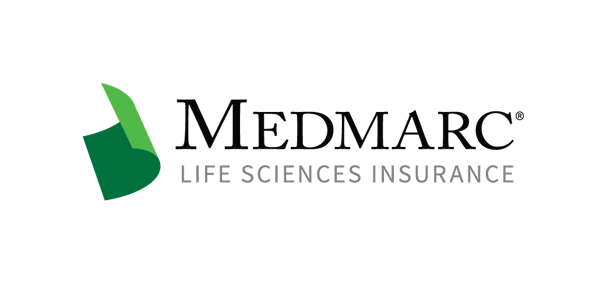An Overview of Liability Immunity for Products Meant to Counter COVID-19 Under the PREP Act
Device manufacturers (as well as drug manufacturers, distributors, and health care providers) are struggling to answer many questions regarding their potential products liability in responding to the COVID-19 pandemic. Fortunately, as discussed below, the PREP Act and the recent declaration by the Secretary for the Department of Health and Human Services provides significant immunity from COVID-19 lawsuits.
In 2005, Congress passed the Public Readiness and Emergency Preparedness Act (“PREP Act”).[1] The PREP Act provides liability immunity to a large group of entities and individuals for the manufacture, distribution, prescription, and use of drugs, biological products, or devices meant to combat a pandemic.[2]
This liability immunity is written almost as broadly as an immunity provision can be written. The protected entities are called “covered persons.”[3] And, covered persons are “immune from suit and liability under Federal and State law with respect to all claims for loss caused by, arising out of, relating to, or resulting from the administration to or the use by an individual of” the drugs, biological products, or devices used to combat the pandemic.[4] The liability immunity covers all actions except for the “willful misconduct” of a covered person.[5]
This immunity extends, for two obvious examples, to (i) a negligence lawsuit against a manufacturer in creating a vaccine meant to treat a pandemic or (ii) a health care provider in prescribing the wrong dose of a drug meant to treat COVID-19.[6] However, the immunity extends much further than just these obvious cases. It would apply, for example, to a “slip-and-fall injury or vehicle collision by a recipient receiving a countermeasure [e.g., drug or device] at a retail store serving as an administration or dispensing location.”[7]
In order for the PREP Act immunity to apply, the Secretary for the Department of Health and Human Services (“Secretary”) must declare a public health emergency.[8] On March 10, 2020, the Secretary made such a declaration for COVID-19.[9] This declaration was effective as of February 4, 2020 and will continue through October 1, 2024.[10]
COVID-19 is not the first declaration of a public health emergency by the Secretary. For example, the Secretary declared a public health emergency in response to an outbreak of the H1N1 influenza virus.[11] Litigation involving that declaration is instructive.
Courts generally enforced the PREP Act during the H1N1 outbreak. For example, when a parent of a kindergartner who was inoculated for H1N1 flu without her parent’s consent filed a lawsuit in New York state court against the health department that administered the vaccine, the Appellate Division of the Supreme Court of New York held that the lawsuit was preempted by the PREP Act.[12] For another example, a plaintiff sued his physician and employer, who in turn sued the vaccine manufacturer, for being vaccinated without informed consent for the H1N1 influenza virus. The federal court in Missouri held that the PREP Act barred the claims against the vaccine manufacturer. This ruling divested the federal court of jurisdiction to decide the remaining claims.[13] These cases demonstrate the power of the PREP Act to protect companies and individuals from lawsuits involving countermeasures to COVID-19.
[1] 42 U.S.C. 247d-6d and 42 U.S.C. 247d-6e. For an overview of the PREP Act from the U.S. Department of Health & Human Services, seehttps://www.phe.gov/Preparedness/legal/prepact/Pages/default.aspx.
[2]Id.
[3] Covered persons include companies and individuals that manufacture, distribute, plan, prescribe, administer, or dispense the drug, biological product or device meant to combat the pandemic. 42 U.S.C. 247d-6d(i)(2).
[4] 42 U.S.C. 247d-6d(a)(1).
[5] 42 U.S.C. 274d-6d(d)(1). Willful misconduct is defined as conduct that is: “(i) intentionally to achieve a wrongful purpose; (ii) knowingly without legal or factual justification; and (iii) in disregard of a known or obvious risk that is so great as to make it highly probable that the harm will outweigh the benefit,” 42 U.S.C.S. § 247d-6d(c)(1)(A), and such conduct must proximately cause the death of serious physical injury. 42 U.S.C. 274d-6d(d)(1).
[6]See 85 FR 15198 at 15200.
[7] 85 FR 15198 at 15200.
[8] 42 U.S.C. 274d-6d(a)(1) and (b).
[9] 85 FR 15198.
[10] 85 FR 15198 at 15198, 15202.
[11] 74 FR 50968.
[12]Parker v. St. Lawrence Cty. Pub. Health Dep’t, 2012 NY Slip Op 7934, 102 A.D.3d 140, 954 N.Y.S.2d 259 (App. Div. 3rd Dept.).
[13]Kehler v. Hood, No. 4:11CV1416 FRB, 2012 U.S. Dist. LEXIS 74502, 2012 WL 1945952 (E.D. Mo. May 30, 2012).
For additional resources contact the Marketing department
Phone: 888-633-6272
Medmarc is a member of ProAssurance Group, a family of specialty liability insurance companies. The product material is for informational purposes only. In the event any of the information presented conflicts with the terms and conditions of any policy of insurance offered from ProAssurance, its subsidiaries, and its affiliates, the terms and conditions of the actual policy will apply.
Copyright © 2025 - Medmarc
